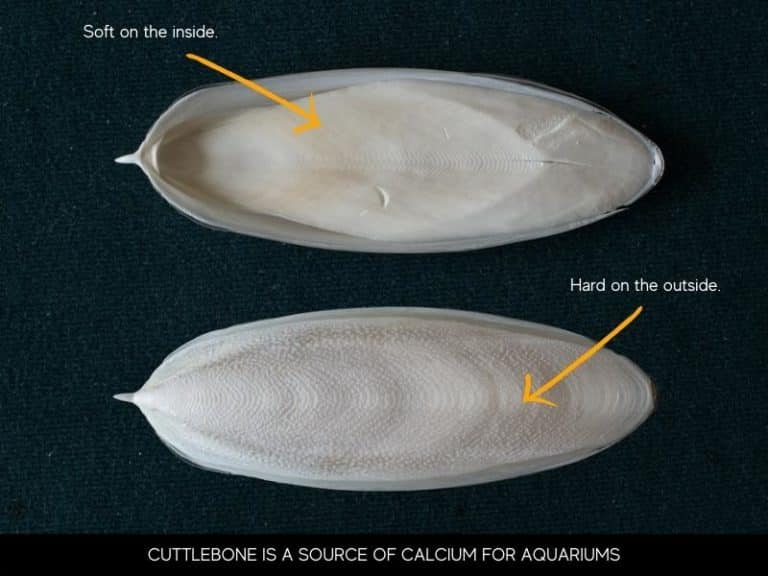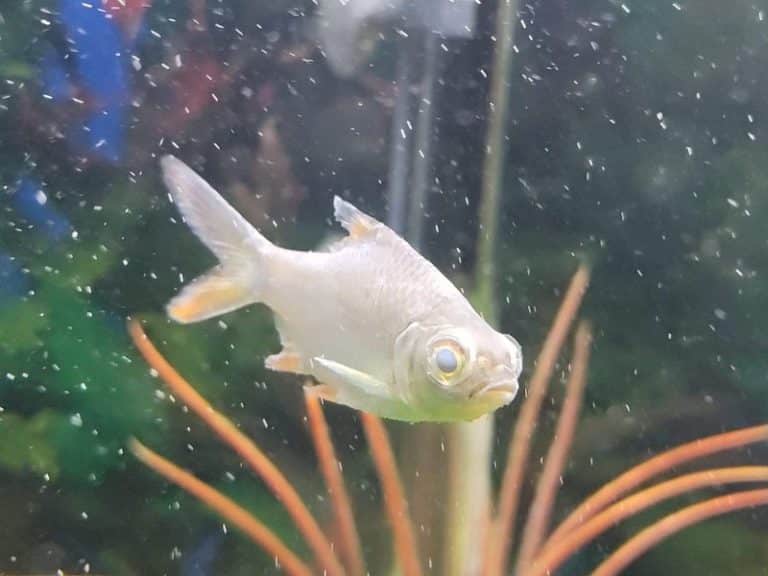Chlorine may be perfect when in our water as we applaud it for being able to remove most of the water contaminants. However, for a fishkeeper, the story is different since chlorine can potentially bring all your fishing efforts to nothing. A dechlorinator, also called a conditioner, is used to reduce the chlorine levels in the water.
Most dechlorinators contain sodium thiosulphate (H10Na2O8S2) that, when added to the water, reacts with chlorine (Cl2) to form sodium sulfate (Na2SO4), sulfur (S), and hydrogen chloride (2HCl) all of which are harmless to fish. Chlorine affects aquatic life negatively and this process prevents that.
These make a dechlorinator a fish keeper’s best friend as it helps reduce or totally do away with the fish’s problems brought by chlorine and chloramines. One of the best dechlorinators is the Tetra AquaSafe Plus Water Conditioner/Dechlorinator. It works quickly, it’s safe for aquatic life, and is easy to use.
What is dechlorination?
Dechlorination removes chlorine in water and makes it suitable for fish and all aquatic life. The process can also eliminate chloramines used in treating the water for the same reason.
The process requires a dechlorinator, a solution that uses ammonium salts to remove the chlorine and chloramines in the water before it’s exposed to the fish.
Chlorine and chloramines in an aquarium can be disastrous as they will clean out everything, including pathogens and bacteria that are helpful to the fish. Chlorine also gets into the fish’s membranes and potentially affects their health. As a result, fish keepers detest it when it affects the filters in the aquarium, exposing the fish to health risks.
There are two main types of dechlorinators namely liquid and granular dechlorinators.
1. Liquid Dechlorinator
The liquid dechlorinator is an ammonia-based solution. It’s applied to the tap water to remove the chlorine content in the water meant for aquatic life.
Unfortunately, the liquid dechlorinator doesn’t work well on chloramines that could be present in the water. The dechlorinated water from a liquid dechlorinator isn’t clean enough for most fish.
2. Granular Dechlorinator
This type of dechlorinator is added to the aquarium or pond before releasing the tap water so it can dilute the effects of the chlorine in the water on the fish.
Gradually, the dechlorinator releases ammonia, which tackles the chlorine and chloramines in the water. The ammonia formed also needs to be converted to harmless ammonium to protect the fish and other aquatic animals and plants.
This type of dechlorination in water treatment is the best since it deals with all forms of chlorine. It leads to be best water when taking care of Oscar fish and many other breeds.
How does a dechlorinator work?
A dechlorinator works by letting out a gas to tackle the chlorine and chloramines present in the water meant for your aquatic life. The gas itself isn’t harmful to the fish. It’s added to help protect them from the adverse effects of chlorine in the tap water. You use a water test kit to gauge the chlorine level of the water before applying the dechlorinator.
Most dechlorinators take a day to complete the entire cycle of eliminating the chlorine present in your water. However, some brands have instant dechlorinators whose performance begins immediately after they are added to the water.
Advantages of dechlorination
The process of dechlorination is beneficial to your aquatic life in various ways:
| Pros | Cons |
| Minimizes chlorine toxicity | Alters the water’s pH |
| Protects filters | Needs an expert to execute correctly. |
| Protects good bacteria and pathogens | Creates breathing problems for fish. |
| Inhibits formation of bad agents | |
| Lowers nitrite levels | |
| Affordable |
1. Minimizes Toxicity of Chlorine
Chlorine in a fish pond can have devastating effects on fish. It can penetrate through the membrane of the fish and affect their health. In addition, chlorine creates breathing problems for the fish, and its dechlorination helps minimize these effects.
Most water supplies will treat their water with chlorine, chloramine, or even both. So, the tap water you use to refill the aquarium has a high concentration of chlorine and chloramines. Fish tank dechlorination helps reduce the impact of these two on your fish.
2. Protects Filters
Chlorine and chloramine in an aquarium reign havoc on the biological filters, and to give them a longer life, fishkeepers apply aquarium dechlorination.
Although chlorine is meant to purify the water, its effects on filters guarding aquatic life are counterproductive.
3. Protects Pathogens and Good Bacteria
For fish to thrive, some helpful bacteria and pathogens are added to the fish pond. Unfortunately, these pathogens and bacteria are ruined if the water is highly chlorinated.
Dechlorination will help protect the bacteria so the fish can benefit from it.
4. Inhibits Formation of Bad Agents
The chemicals in your tap water join to form harmful agents that could hurt your fish. Dechlorination inhibits this process by destroying the bonds that form the destructive elements. This process happens without destroying the fish, making it more preferred by fishers.
Harmful agents adsorb to the surface of the aquarium, destroying your fish. With dechlorination, however, the process of adsorption is thwarted.
5. Lowers Nitrite Level
Nitrites are toxic to fish and other aquatic life. In an aquarium, nitrite is formed as a nitrifying bacteria in breaking down ammonia.
Nitrites are a major concern to aquatic life as they harm water and fish, especially when highly concentrated.
6. Affordable
If you compare the overall cost that the process saves you, then dechlorination is quite affordable. It can be devastating to lose an entire breed to chlorine effects, so you’d rather invest in the dechlorination procedure.
Most of the reagents used in the dechlorination process are not overly priced. Additionally, if you compare the cost of other methods of removing chlorine in your aquarium, like an ozone generator, dechlorination is less costly.
Disadvantages of dechlorination
For everything with benefits, there’s always a downside. Some of the disadvantages of using dechlorination in your aquarium include:
1. It Alters the Water’s pH
The PH level of your aquarium water is critical for the fish to thrive. Maintaining a healthy level has the following benefits:
- Boosts disease resistance for the fish.
- Improves their stress handling ability.
- Improves the physical appearance of the fish.
- Boosts faster growth.
- Controls bad bacteria growth.
- Improves the fish reproduction rate.
Since dechlorination can affect the fish tank’s PH levels, you need to monitor it properly, so you don’t miss out on all the benefits of a balanced PH level.
2. Requires an Expert
Dechlorination needs to be done correctly, so it doesn’t affect aquatic life. To do it, you need to either involve an expert to handle it or get trained.
When done wrongly, dechlorination can turn toxic to the fish. Therefore, you need to know how much of the dechlorinators are required when you need them and the levels necessary.
You need to consult an expert the first time you do it lest you lose the entire breed for doing it wrongly.
3. Creates Breathing Problems for the Fish
Dechlorination thrives on altering the bonds of the elements that make up the water. But, in the process, it reduces the oxygen levels, which causes breathing stress for the fish.
For this reason, the amount of the dechlorinator added needs to be closely monitored, and enough time allowed for the dechlorination to occur. Hurrying the process can have devastating effects on the fish.
Unmonitored levels of the dechlorinator can affect even the helpful plants in the tanks that assist in supplying oxygen to the fish. Once the plants are lost, the tank’s oxygen levels are lowered, affecting the fish’s breathing ability.
How often should I use a dechlorinator?
You can use a dechlorinator whenever you change your water in the aquarium. For example, as you introduce tap water to the fish tank, dechlorinate it since it’s the tap water from which you want to cleanse the chlorine and chloramines.
The frequency you change the water will determine how often you dechlorinate. For example, most fishers will remove 40% of the tank water every so often. It’s during this change that you dechlorinate.
Different brands have varied instructions on how much of a dechlorinator to use. Follow the instructions or consult an expert to gain clarity on the dosage.
Conclusion
Dechlorination is an inexpensive process that can save your entire fish breed from the adverse effects of chlorine and chloramine. If you have a new tank, you can treat the whole tank, but if you are refilling it, you only need to treat the water you will be adding to the tank.
References
United States Environmental Agency. Wastewater Technology Fact Sheet: Dechlorination.
Texas A&M AgriLife Extension. On-Site Sewage Facilities (OSSF).
Mountain Empire Community College. Chlorination and Dechlorination.




